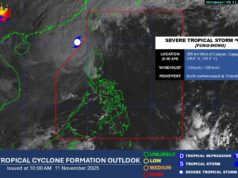P1.9-B released for typhoon affected farmers, fisherfolk, and ASF-affected hog raisers
THE DEPARTMENT of Agriculture (DA) said that it has released P1.9 billion from its quick response fund (QRF) to help farmers and fisherfolk affected by recent calamities and hog raisers whose business was damaged by the African Swine Fever (ASF).
In a statement, Agriculture Secretary William D. Dar said a big chunk of the department’s quick response fund went to indemnify ASF-affected hog raisers in 2019 and early 2020, and farmers and fisherfolk whose crops and equipment were damaged by typhoons and the Taal Volcano eruption.
“Through our regional field offices, funds from the agency’s quick response budget were used to help affected farmers, fishers, and hog raisers to recover from their losses and start anew,” the DA said.
In a report submitted to Mr. Dar, DA Field Operations Services Director Roy M. Abaya said that P733 million was given to ASF-affected hog raisers, P567 million to farmers and fisherfolk affected by Typhoons Tisoy, Ursula, and Ambo, and P463 million worth of technical assistance and farm and fishery inputs to those disrupted by the Taal Volcano eruption.
Other assistance given under the P1.9 billion quick response budget include the P150 million allotted to control and contain the Fall Army Worm corn infestation, and P28.4 million to assist drought-affected farmers in Region 2.
“Using the QRF, we were able to respond immediately to help affected farmers and fisherfolk recover and bounce back from adversities caused by natural calamities,” Mr. Dar said.
Mr. Dar urged DA regional executive directors to be proactive to soften the effect of natural disasters on farmers, fishers, and their families.
“Learning from our experience under the COVID-19 regime, we must always remain vigilant on the challenges that threaten our food security, be it natural or man-made. Hence, we will vigorously work on further boosting domestic food production and the entire value chain, in general,” Mr. Dar said. — Revin Mikhael D. Ochave



